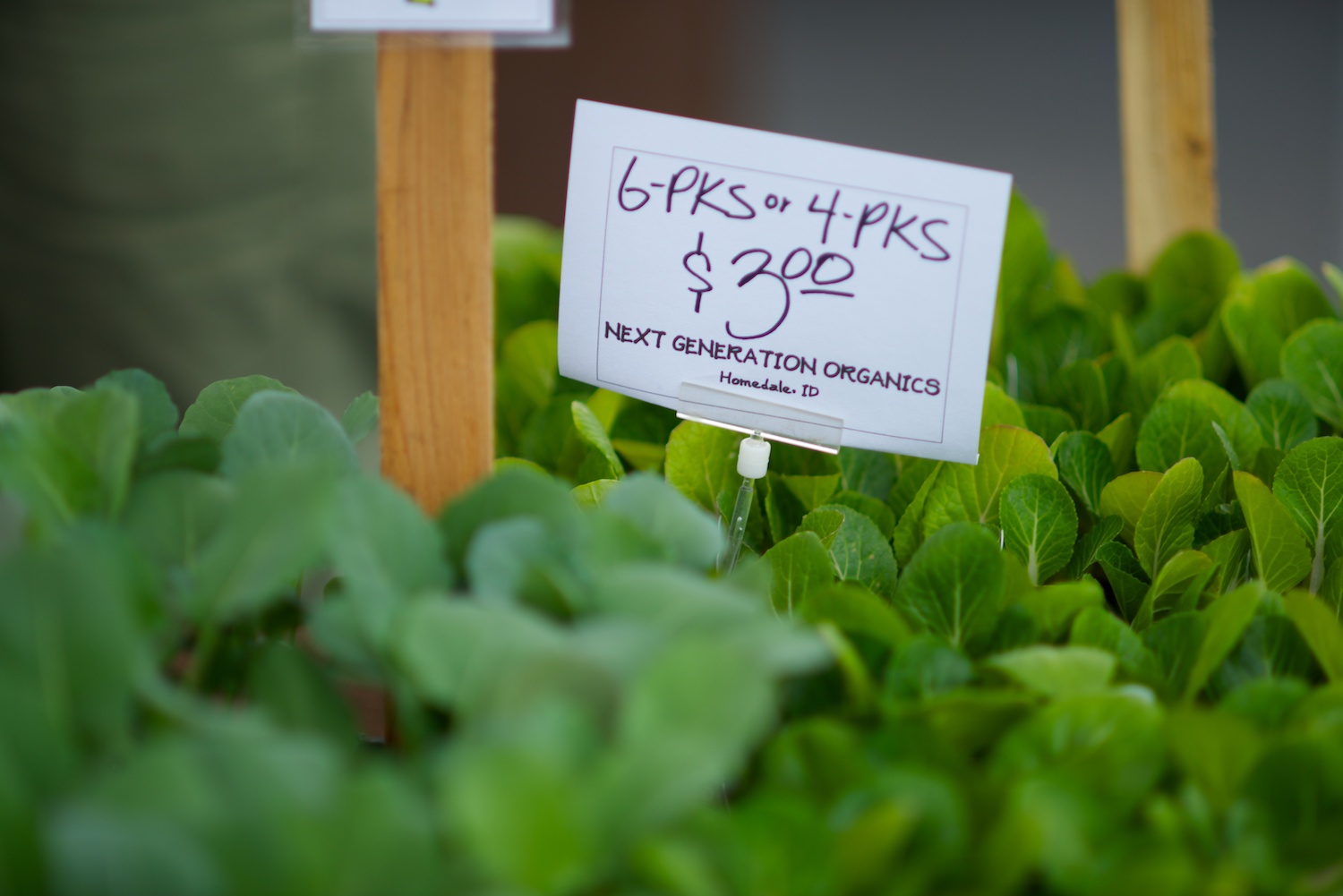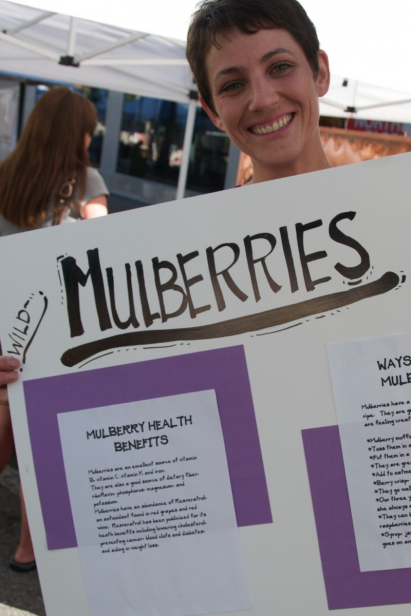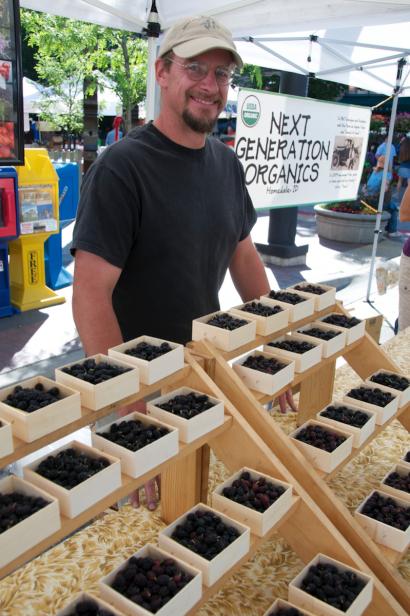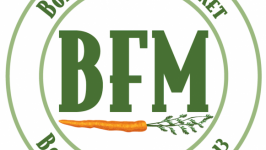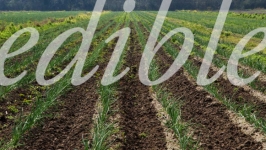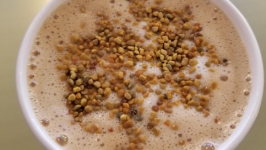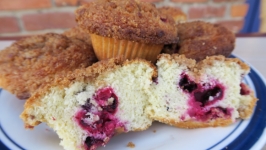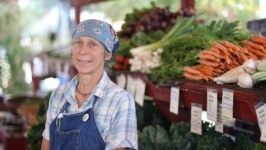A Quiet Revolution
“Check this out!” Bart Rayne, co-owner of Next Generation Organics in Homedale, motions me into another shed crammed onto their small property across the street from the Owyhee County Fairgrounds. “It’s a cool-bot,” he says, opening the door to a Styrofoam-padded cell inside the shed. “It works like a walk-in cooler, but I built it with an old air conditioner I got for free.”
A small-scale farmer myself, I appreciate his resourcefulness. “And over here,” he continues, “I’ve taken this water heater and hooked it up to heating coils I ran along the benches in Elayne’s greenhouse.” This tour is emblematic of the couple’s elegant straddling of the urban-rural divide, where the castoff of consumer culture provides inexhaustible fodder for ingenuity.
The Raynes purchased Bart’s grandparents’ old house in 2005, and later began growing and selling plant starts at the Meridian Farmers' Market, quickly moving to the busier Boise-based market. The Next Generation in their name is not only a nod to their agrarian grandparents but also to the adoption of a new philosophy in agriculture. Young people like the Raynes are flocking to farming with a focus on organic food grown for local markets.
To see them, along with their 7-year-old daughter Sadie, smiling and chatting easily with shoppers at the Boise Farmers Market over their colorful, overflowing market booth, one would never guess they were once too intimidated to come to the market in Boise. Over the past five years, they’ve built a following offering high-quality organic plant starts in the spring and unusual varieties of produce in the summer, all with a refreshing humility. They credit Canyon Bounty Farm’s Beth Rasgorshek with mentoring them on growing plant starts, and they’ve tried to develop a niche at market that doesn’t step on other growers’ toes. They made the decision to move to the new Boise Farmers Market from the Capital City Public Market last year because so many of their mentor farmers were making the switch.
“I think we’re many people’s secondary farm. They’ll go to their old favorite farmers first, and then come to us and pick up a few unusual things we have that others don’t,” Elayne Rayne says. “I love growing the unusual stuff—if you’re going to work that hard, you’d better like what you’re growing.” Bart Rayne agrees. “I love offering people something they can’t find anywhere else.” Their mulberries, harvested from the tree that runs along the canal bank behind their house, draw a crowd in early summer, and their mind-boggling array of specialty peppers and eggplants take the stage as the season scorches along. They’ve tried microgreens, pie cherries, rare shallots and, new for 2013, varieties of corn bred specifically for polenta.
Last year, the Raynes leased a seven-acre parcel across from Bart’s grandparents’ old farm, down the road from their house, and Bart quickly realized he wanted to try a small grain crop with so much new ground to tend to. Again taking inspiration from Beth Rasgorshek, who had been cultivating a polenta corn project for several years, he decided to try it. “You can do it by hand, which I needed,” he explains. “No combine.” Rasgorshek gave him some seed from an Italian heirloom variety, Otto File. Meadowlark Farm’s Janie Burns chipped in some Floriani corn seed she’d been cultivating and saving seed from with the hope of creating an all-local corn dog. Rayne threw in a couple other highly-regarded varieties—Roy’s Calais and Nothstine Dent—and gave it a shot.
“I actually got kind of irritated with him,” Elayne Rayne remembers with a smile. “Here we had all this other farm work to do and he was reading all these books on corn!”
Grains, like so many mass-produced commodities, are often overlooked in the quest for local food. Yet, we Americans consume easily as many grains as other types of foods, making local grain production of the utmost importance if we are to create regional food security. Projects like Next Generation’s polenta project encourage us to rethink the origins of those faceless supermarket commodities and to explore the incredible diversity in taste and texture heirloom varieties can bring to the table. From the earthly Roy’s Calais to the beautiful, bright, redflecked Floriani, cooking and eating them becomes an experience to savor.
Yet, trying new delicacies out on customers can be a gamble; after all, the Raynes have to make a living as well as explore a universe of food possibilities. But the couple’s quiet curiosity and faith in community keeps them moving ahead.
“We were nervous at first,” Elayne says of their polenta project, “but that’s the fun part. Our customers have more time to cook than we do. They bring us recipes, homemade muffins, and we all like the collaboration.”
Next Generation Organics
Owyhee County Fairgrounds
Meridian Farmers' Market | @meridianfarmers
Boise Farmers Market | @boisefarmersmarket
Canyon Bounty Farm
Capital City Public Market | @capitalcitypublicmarket
Meadowlark Farm | @meadowlarkfarm_id


